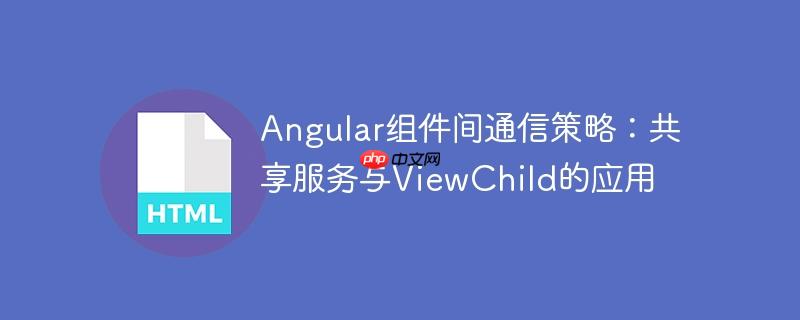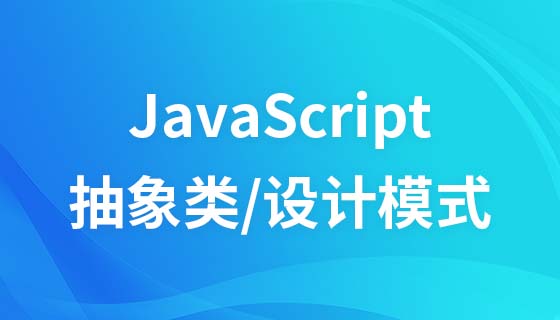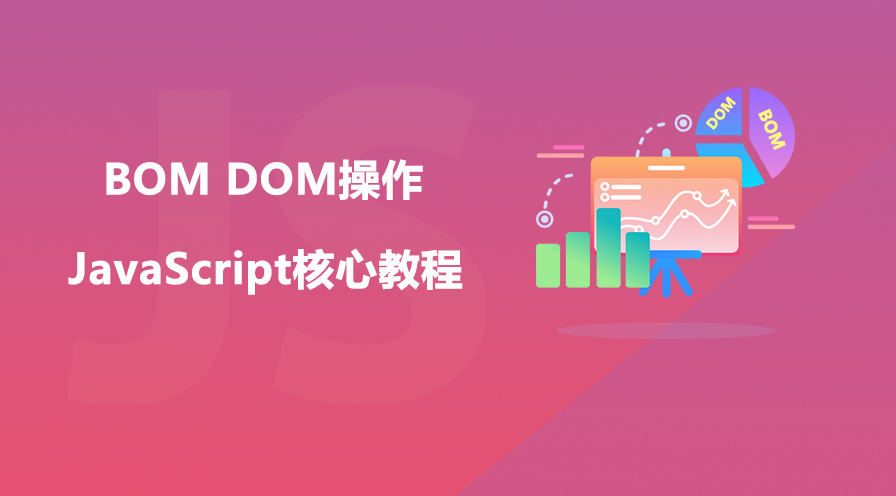
在Angular应用中,组件是构建用户界面的基本单元。随着应用复杂度的提升,组件之间的数据共享和方法调用变得不可避免。Angular提供了多种机制来处理组件间的通信,选择合适的策略对于保持代码的可维护性、可扩展性和性能至关重要。本文将重点介绍两种常用的通信模式:基于共享服务的发布/订阅模式(适用于无关组件)和基于@ViewChild的直接调用模式(适用于父子组件)。
当两个或多个组件之间没有直接的父子关系,但需要进行数据交换或事件触发时,共享服务是理想的选择。服务作为数据的中央存储或事件总线,允许组件通过注入服务来发送和接收信息。RxJS的Subject或BehaviorSubject是实现这种模式的常用工具。
创建一个可注入的服务,其中包含一个Subject或BehaviorSubject来承载数据流。BehaviorSubject在订阅时会立即发出当前值,这对于需要最新状态的场景非常有用。
// src/app/services/main.service.ts
import { Injectable } from '@angular/core';
import { BehaviorSubject, Observable } from 'rxjs';
@Injectable({
providedIn: 'root' // 声明服务在根模块提供,使其在整个应用中可注入
})
export class MainService {
// 使用BehaviorSubject,它会记住最新的值,并在有新订阅者时立即发出
// "111" 是初始默认值
private messageSource = new BehaviorSubject<string>("111");
// 提供一个Observable供其他组件订阅
currentMessage: Observable<string> = this.messageSource.asObservable();
constructor() { }
// 发送消息的方法,更新BehaviorSubject的值
sendMessage(message: string) {
this.messageSource.next(message);
}
// 接收消息的方法,返回Observable供组件订阅
receiveMessage(): Observable<string> {
return this.messageSource.asObservable();
}
}发送方组件通过注入服务,并调用服务中的方法来发送数据。
// src/app/first/first.component.ts
import { Component, OnInit } from '@angular/core';
import { MainService } from '../services/main.service'; // 导入服务
@Component({
selector: 'app-first',
template: `<button (click)="clickMe()">点击发送消息</button>`
})
export class FirstComponent implements OnInit {
constructor(private mainService: MainService) { } // 注入服务
ngOnInit(): void {
// 可以在这里订阅,但通常发送方不需要订阅自己的消息
}
clickMe() {
// 调用服务的方法发送消息
this.mainService.sendMessage("001");
console.log("消息 '001' 已发送");
}
}接收方组件同样注入服务,并在组件初始化时订阅服务中的Observable,以便接收数据。
// src/app/second/second.component.ts
import { Component, OnInit, OnDestroy } from '@angular/core';
import { MainService } from '../services/main.service'; // 导入服务
import { Subscription } from 'rxjs'; // 导入Subscription用于管理订阅
@Component({
selector: 'app-second',
template: `<p>接收到的消息:{{ receivedMessage }}</p>`
})
export class SecondComponent implements OnInit, OnDestroy {
clickEventSubscription: Subscription;
receivedMessage: string = '';
constructor(private mainService: MainService) { } // 注入服务
ngOnInit(): void {
// 订阅服务中的消息流
this.clickEventSubscription = this.mainService.receiveMessage().subscribe(message => {
this.toggle(message); // 收到消息后调用处理函数
});
}
public toggle(state: string) {
this.receivedMessage = state;
console.log(`在SecondComponent中收到消息: ${state}`);
}
ngOnDestroy(): void {
// 组件销毁时取消订阅,防止内存泄漏
if (this.clickEventSubscription) {
this.clickEventSubscription.unsubscribe();
}
}
}当父组件需要直接访问子组件的属性或调用其方法时,@ViewChild装饰器是首选方案。它允许父组件在视图初始化后获取子组件的实例。
在父组件中,使用@ViewChild装饰器并传入子组件的类型或模板引用变量,来获取子组件的实例。
// src/app/first/first.component.ts (作为父组件)
import { Component, OnInit, ViewChild, AfterViewInit } from '@angular/core';
import { SecondComponent } from '../second/second.component'; // 导入子组件
@Component({
selector: 'app-first',
template: `
<button (click)="callChildMethod()">调用子组件方法</button>
<app-second></app-second> <!-- 在父组件模板中嵌入子组件 -->
`
})
export class FirstComponent implements OnInit, AfterViewInit {
// 使用@ViewChild获取SecondComponent的实例
// static: false 表示在ngAfterViewInit中解析,适用于子组件依赖于异步加载或条件渲染的情况
@ViewChild(SecondComponent, { static: false }) secondChildView!: SecondComponent;
constructor() { }
ngOnInit(): void { }
// 在视图初始化后才能确保子组件实例可用
ngAfterViewInit(): void {
// 可以在这里访问 secondChildView,例如:
// console.log('子组件实例已加载:', this.secondChildView);
}
callChildMethod() {
if (this.secondChildView) {
// 直接调用子组件的toggle方法
this.secondChildView.toggle('001');
console.log("已通过@ViewChild调用子组件的toggle方法,并传入 '001'");
} else {
console.error("子组件实例尚未准备好!");
}
}
}子组件只需要定义它希望被父组件调用的方法。
// src/app/second/second.component.ts (作为子组件)
import { Component, OnInit } from '@angular/core';
@Component({
selector: 'app-second',
template: `<p>子组件内部消息:{{ internalState }}</p>`
})
export class SecondComponent implements OnInit {
public internalState: string = '默认状态';
constructor() { }
ngOnInit(): void { }
// 这个方法将被父组件调用
public toggle(state: string) {
this.internalState = state;
console.log(`在SecondComponent中,toggle方法被调用,状态更新为: ${state}`);
}
}Angular提供了灵活多样的组件通信机制,理解它们的适用场景是高效开发的关键:
在实际开发中,开发者应根据组件间的关系、数据流向以及耦合度要求,灵活选择最适合的通信策略。通常,对于事件通知,@Output和EventEmitter是父子组件通信的另一种常用方式(子组件向父组件发送事件);而对于复杂或跨层级的通信,共享服务往往是更优解。
以上就是Angular组件间通信策略:共享服务与ViewChild的应用的详细内容,更多请关注php中文网其它相关文章!

每个人都需要一台速度更快、更稳定的 PC。随着时间的推移,垃圾文件、旧注册表数据和不必要的后台进程会占用资源并降低性能。幸运的是,许多工具可以让 Windows 保持平稳运行。




Copyright 2014-2025 https://www.php.cn/ All Rights Reserved | php.cn | 湘ICP备2023035733号